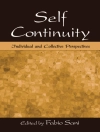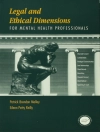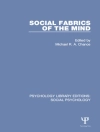Now revised and expanded to include cutting-edge acceptance-based techniques and a new focus on inhibitory learning, this is the leading guide to therapeutic exposure, a crucial element of evidence-based psychological treatments for anxiety. The book helps the clinician gain skills and confidence for implementing exposure successfully and tailoring interventions to each client’s needs, regardless of diagnosis. The theoretical and empirical bases of exposure are reviewed and specialized assessment and treatment planning techniques are described. User-friendly features include illustrative case examples, sample treatment plans, ideas for exercises targeting specific types of fears, and reproducible handouts and forms that can be downloaded and printed in a convenient 8½’ x 11′ size.
New to This Edition
*Chapter on acceptance and commitment therapy (ACT) techniques.
*Reflects a shift in the field toward inhibitory learning–helping clients learn to tolerate anxiety and uncertainty to maximize long-term outcomes.
*Chapter on uses of technology, such as computer-based therapy and virtual reality tools.
*Conceptual, empirical, and clinical advances woven throughout.
See also the related client recommendation,
The Anxiety and Worry Workbook, Second Edition, by David A. Clark and Aaron T. Beck.
Table of Content
I. The Fundamentals of Exposure Therapy
1. Overview and History of Exposure Therapy for Anxiety
2. How Well Does Exposure Therapy Work?
3. The Nature and Treatment of Clinical Anxiety
4. Treatment Planning I: Functional Assessment
5. Treatment Planning II: Treatment Engagement and Exposure List Development
6. Implementing Exposure Therapy
II. Implementing Exposure Therapy for Specific Types of Fears
7. Animal-Related Fears
8. Environmental Fears
9. Social Situations
10. Unwanted Intrusive Thoughts
11. Bodily Cues and Health Concerns
12. Contamination
13. Trauma-Focused Fear
14. Blood-, Injection-, and Injury-Related Stimuli
15. Incompleteness, Asymmetry, and ‘Not-Just-Right’ Feelings
III. Special Considerations in the Use of Exposure Techniques
16. Exposure Therapy with Complex Cases
17. Exposure Therapy with Children
18. Involving Significant Others in Treatment
19. Combining Exposure Therapy with Medication
20. Maintaining Improvement after Treatment
21. Using Technology to Implement Exposure Therapy
22. Using Acceptance and Commitment Therapy with Exposure
23. A Risk–Benefit Analysis of Exposure Therapy
About the author
Jonathan S. Abramowitz, Ph D, ABPP, is Professor of Psychology and Neuroscience, Research Professor of Psychiatry, and Director of the Anxiety and Stress Disorders Clinic at the University of North Carolina at Chapel Hill. Dr. Abramowitz conducts research on anxiety disorders and has published over 250 articles, book chapters, and books. He serves as Editor of the Journal of Obsessive–Compulsive and Related Disorders and is on the editorial boards of several other scientific journals. He is past president of the Association for Behavioral and Cognitive Therapies and serves on the scientific and clinical advisory board of the International OCD Foundation. Dr. Abramowitz is a recipient of the Outstanding Contributions to Research Award from the Mayo Clinic Department of Psychiatry and Psychology and the David Shakow Early Career Award for Distinguished Scientific Contributions to Clinical Psychology from Division 12 of the American Psychological Association. His books include
Getting Over OCD, Second Edition, and
The Stress Less Workbook (for general readers) and
Exposure Therapy for Anxiety, Second Edition (for mental health professionals).
Brett J. Deacon, Ph D, is a clinical psychologist in private practice in Wollongong, Australia, and Conjoint Associate Professor at the University of New South Wales. He has published approximately 100 research articles and book chapters, served as Editor of
The Behavior Therapist and Associate Editor of the
Journal of Cognitive Psychotherapy, and is an editorial board member of numerous scientific journals. Dr. Deacon’s research examines the dissemination, optimal delivery, and acceptability of exposure therapy for anxiety. He is the recipient of numerous teaching, research, and student mentorship awards from the University of Wyoming, as well as the Golden Anniversary Alumni Award from Northern Illinois University College of Liberal Arts and Sciences. Dr. Deacon presents workshops around the world on exposure therapy.
Stephen P. H. Whiteside, Ph D, ABPP, is Professor of Psychology and Director of the Pediatric Anxiety Disorders Program at the Mayo Clinic in Rochester, Minnesota. His research focuses on improving access to evidence-based care for pediatric anxiety disorders and obsessive–compulsive disorder through the development of effective and efficient treatments facilitated by technology. Dr. Whiteside serves on the editorial board of the
Journal of Anxiety Disorders and on the Education and Training Committee of the Minnesota Psychological Association. He has published over 60 scientific articles and is the codeveloper of the Mayo Clinic Anxiety Coach, a smartphone app that aids in the delivery of exposure.












